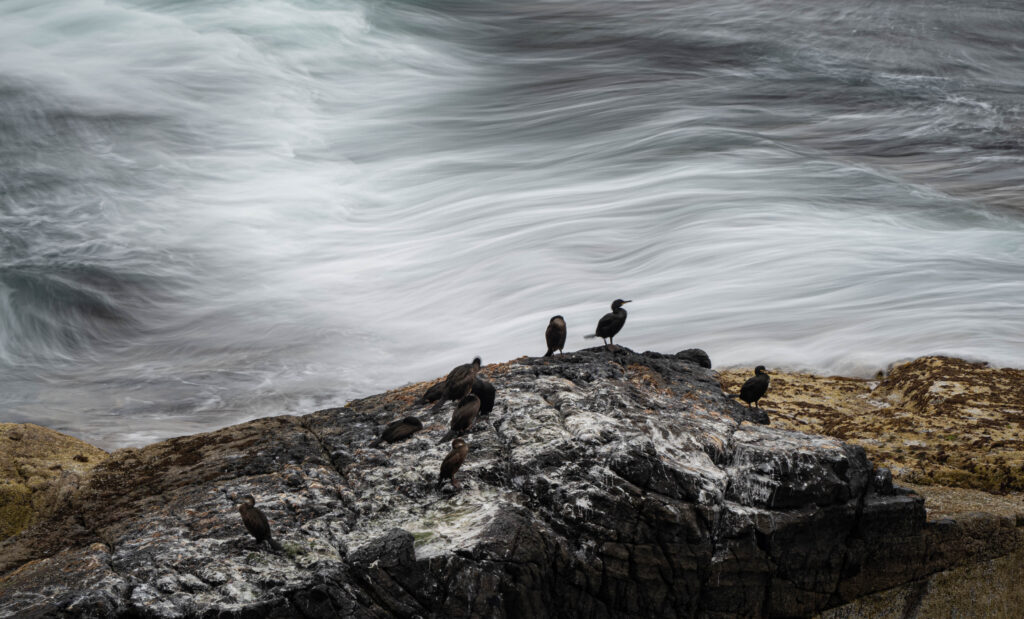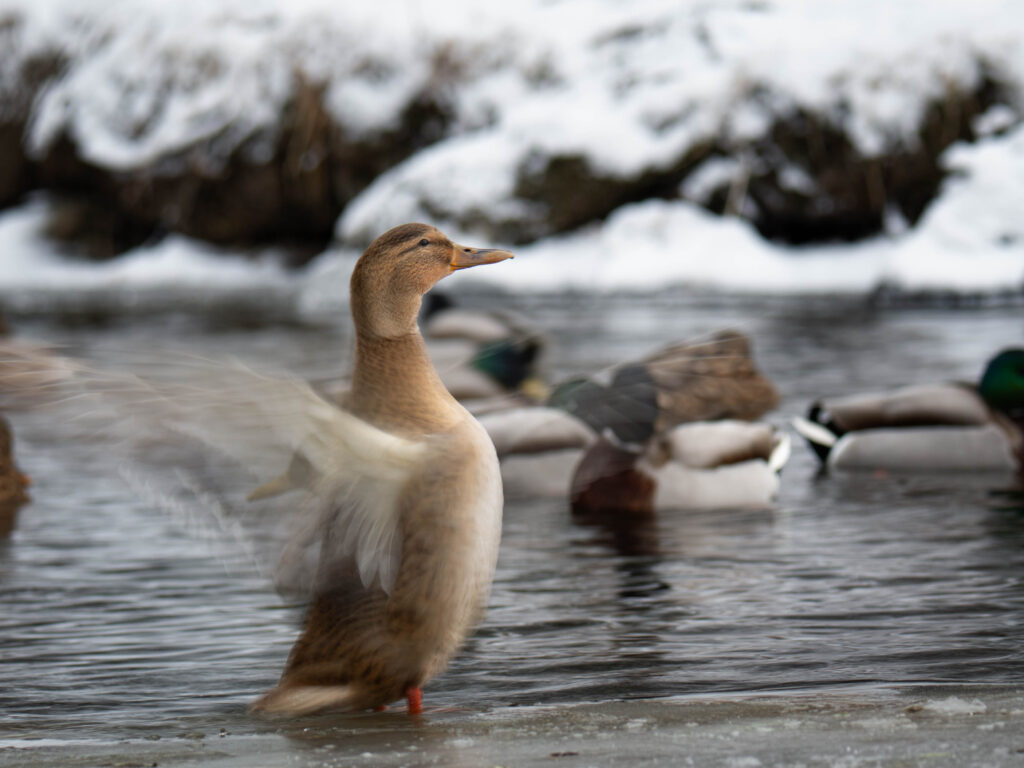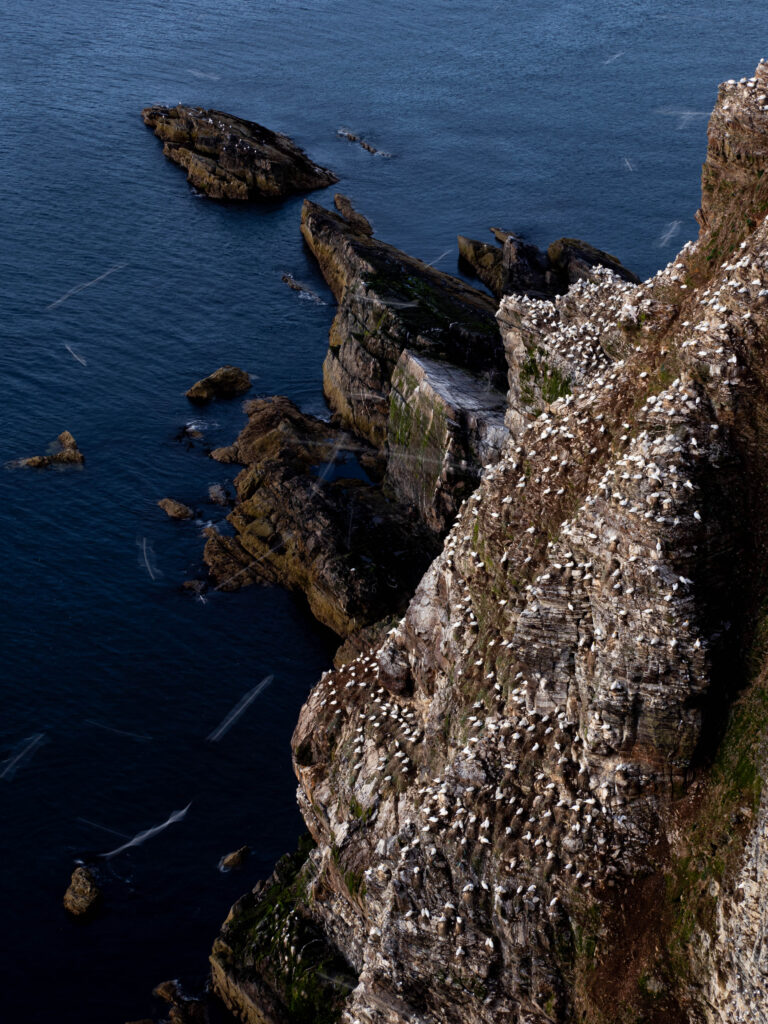January 17, 2025
From Chaos to Art: Transform Wildlife Photography with Live ND
Live ND with OM System Cameras
The introduction of Live ND in OM System cameras has enabled landscape photographers to get creative results while taking away the hassle of bringing filters into the field.
But, have you ever thought to use Live ND for your wildlife photography to create something more artistic?

OM System cameras with Live ND
You can find Live ND on the OM-1 Mark II, OM-1, OM-5, OM-D E-M1X and the OM-D E-M1 Mark III. The OM-1 Mark II has got the most versatility with simulated filters ranging from ND2 to ND128.
What is Live ND?
Live ND simulates the effect of neutral density filters, reducing the amount of light entering the camera sensor. This enables slower shutter speeds, even in bright conditions, making it ideal for creating motion blur or emphasising dynamic movement. Unlike traditional ND filters, Live ND is built directly into the camera, offering unmatched convenience and flexibility.
In the image below I was photographing ducks on a half frozen pond in Norway when I decided to try the Live ND filter to convey motion. Unfortunately Lightroom doesn’t give any info on the settings used for the Live ND so I can’t say which strength on the Live ND I used. However, the important thing is that I used the appropriate Live ND to get the desired shutter speed, which in this case was 1/25s.

Why Use Live ND for Wildlife Photography?
Conveying Motion
The main reason you would use Live ND is to convey motion in an image by making all or parts of the image blurry. Wildlife and nature scenes are full of motion—birds flying, waterfalls cascading, or grass swaying in the wind are common elements in motion. Live ND lets you emphasise this movement by introducing controlled blur to parts of your image that’s in movement.
For wildlife photography you can play around with either blurring the wildlife, trying to get the animal sharp while blurring surrounding elements, or go for motion all over.
In July 2024 I was photographing gannets with a pal at Troup Head in Scotland. After a lot of close ups of the gannets I decided to use my 40-150mm f/2.8 lens to show more of the landscape and the amount of gannets that were nesting there. After finding a composition I was happy with I wanted to try to get the flying gannets as streaks across the darker background. I was using an aperture of f/10 to get sharpness throughout the image, but even at and ISO of 80 I needed to use the Live ND as well to get my shutter speed low enough for the kind of image I had in mind.

Can’t I just use a higher f-stop to slow my shutter speed?
It’s true that sometimes you could just increase your f-stop to allow you to use a slower shutter speed. However, depending on the light it might be so bright that even if you put your f-stop at max (e.g. f/22), the image would still be over exposed if you tried to use a slow shutter.
If you have to use the maximum f-stop you may also experience diffraction and introduce a softness to your image. Finally, with a high f-stop you also increase depth of field (what’s sharp) in an image which may ruin the desired result you were after.
Simplifying Your Gear
As wildlife photographers we don’t really tend to drag filters with us in the field just incase it may be useful. Live ND eliminates this hassle, allowing you to stay agile and focus on the unpredictable nature of wildlife.
Whenever I have a bird near flowing water I try to use the Live ND to blur out the water while keeping the bird sharp. With a bird like the dipper that’s not easy, the reason is in the name, they dip all d… the time! Here’s an attempt at a river near me in Perthshire, Scotland. The bird isn’t quite sharp, but this is a work in progress, I’m still chasing the perfect dipper image with water flowing all around.

Tips for Using Live ND in the Field
- Set Your Intent
Decide how much motion you want to emphasise or create a surreal atmosphere altogether. Experiment with different ND levels to find the right balance for your subject and environment. This of course depends on the available light on the day. Using a higher ND number will allow you to use a longer shutter speed, which is what actually determines the final ‘blurriness’ in the image. - Use a Tripod or Stabilisation
Although OM System cameras feature excellent image stabilisation, a tripod ensures maximum sharpness when using longer exposures. I will usually go handheld first to get my composition and then use a tripod if I’m going for a very long exposure. Whether I’m using a telephoto or a wide angle lens will also factor in whether I go for a tripod or not. With a wide angle I can hold the camera steady at longer shutter speeds than with a telephoto lens. - Focus on Composition
Before turning on the Live ND I will usually have tried several ‘normal’ images and found my favourite composition. With Live ND, you can also take advantage of the preview feature to visualise the motion blur before taking the shot. - Assign a Quick Button for Live ND
Wildlife is unpredictable, if you see an image that may be suitable to use Live ND it’s good to be able to quickly get your settings right. I have Live ND assigned to one of my front buttons on my OM-1 (I& ii) that I can reach with my middle finger.
Check out my course on the OM System for Wildlife Photography to learn how I setup my OM System/Olympus cameras and use them for wildlife photography.
The Creative Edge
Live ND doesn’t just simplify technical challenges—it unlocks creative opportunities. Picture a heron standing still in a fast flowing stream, the water flowing like silk around it, or a sky filled with flying birds, their wings slightly blurred to emphasise speed. With Live ND, the possibilities are only limited by our imagination.
By leveraging this innovative feature, wildlife photographers can push the boundaries of their artistry while staying light and nimble in the field. So, grab your OM System camera, explore the magic of Live ND, and capture wildlife moments like never before.
Have you used the Live ND on OM System for wildlife?
be the first to comment